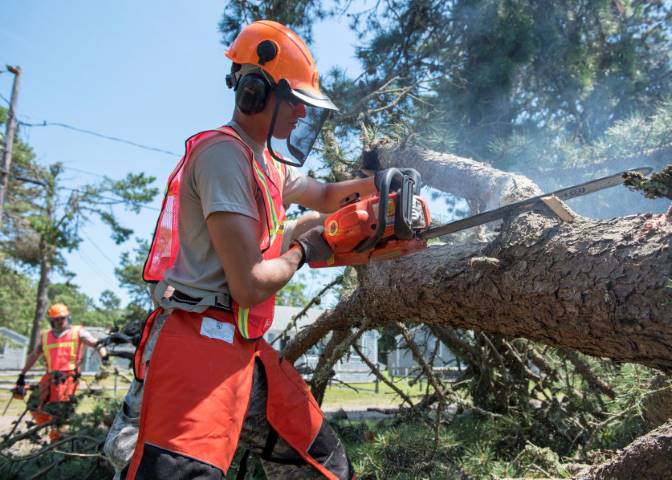Weather today is challenging, and the Outdoor Power Equipment Institute (OPEI) reminds home and business owners that it’s important to make sure you have the right outdoor power equipment on hand and to keep equipment in good working order year-round.
A chainsaw or pole pruner can trim limbs ahead of a storm or handle fallen limbs helping to clear debris. A generator will power appliances and keep lights on and cell phones charged when the electricity goes out. A water pump can help with flooding in your home or basement. A utility vehicle can be maneuverable and is smaller than a car, helping transport people and supplies quickly in an emergency.
Today’s outdoor power equipment is increasingly easier to use, more efficient and cleaner — and powered in a variety of ways, including battery/electric, hybrids, propane, and solar as well as gasoline and diesel. Even robotic, interconnected and remote-controlled technology has entered the power equipment market.
“We’ve experienced a lot of problematic weather lately but, thankfully, there is a product and power source for every need and to address every scenario. Being prepared for the unpredictable is easier than ever before,” said Kris Kiser, President & CEO of OPEI, an international trade association representing manufacturers and suppliers of outdoor power equipment, small engines, battery power systems, portable generators, utility and personal transport vehicles, and golf cars.
OPEI offers the following tips to help home and business owners:
Get ready in advance. Before a disaster or storm strikes is the best time to buy outdoor power equipment. You never know when the electricity might go out or when a storm might arise.
Know your needs. Determine what might need to be cleaned up or tidied before severe weather arrives. Decide what equipment is needed to keep people and property safe before and after a disaster or power outage.
Do research. Outdoor power equipment has changed a lot from what you might remember from year’s past. The industry is rapidly innovating with equipment becoming faster, lighter, more efficient, more ergonomic and cleaner. Get their recommendations from dealers and store personnel who are well versed in equipment.
Buy what fits your needs. Each equipment type and power source has different maintenance and care requirements. Equipment is sized for different levels of need, so it’s important to buy what works for your unique situation.
Think ahead and purchase accessories. Buy outdoor-rated extension cords for generators, and consider getting an approved cover for your generator for rainy weather. Buy and install a carbon monoxide detector if purchasing a generator. Plan now where the generator will be set up (never in a home or garage, and always away from your home and any air intake) and determine how to secure it if necessary. Identify safety equipment needed like chaps, eye protection or hearing protection. Gasoline-powered outdoor power equipment uses E10 or less fuel and most manufacturers recommend adding a fuel stabilizer.
Purchase appropriate fuel and charge batteries just ahead of a storm. Only use an approved fuel container for gasoline, and have an extra set of batteries on hand.
Review manufacturer’s directions and maintain your equipment. Always follow all safety and usage recommendations made by the manufacturer. Save a digital copy of the owner’s manual on your computer if possible, so it can easily be consulted in the future. Set calendar reminders for regular maintenance.
Keep Your Outdoor Power Equipment Ready
